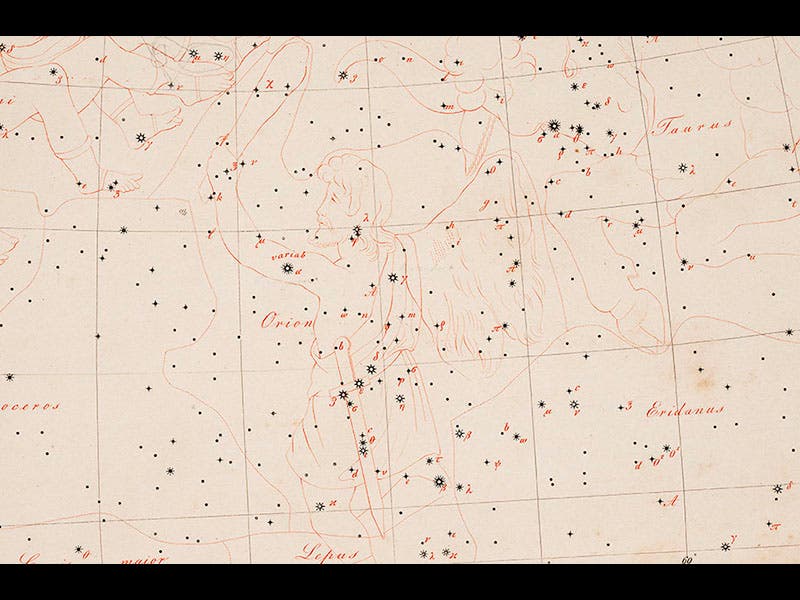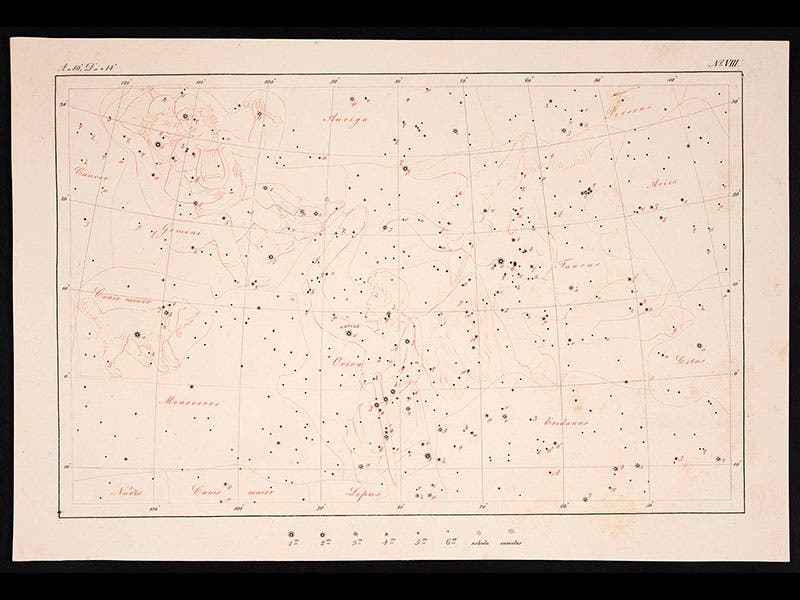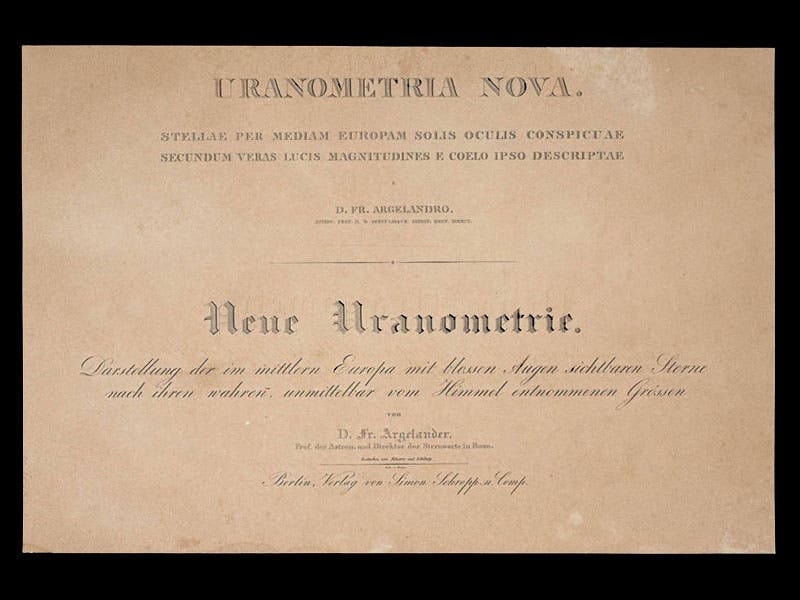Scientist of the Day - Friedrich Argelander
Friedrich Argelander, a German astronomer, was born Mar. 22, 1799. In 1843, Argelander published a star atlas, with titles in both Latin and German, Neue Uranometrie/ Uranometria nova (fourth image). The titles were a deliberate choice. Back in 1603, another German, Johann Bayer, had published the first modern star atlas, which he titled Uranometria, with elegant constellation figures and star positions determined by Tycho Brahe. We see above a plate from that atlas, showing the constellation Orion (fifth image). Note how heavy-handed it was: strong constellation outlines, and stars that almost seemed to explode off the page. Since Bayer's Uranometria, there had been scores of celestial atlases published. New constellations were proposed, which jostled for position with the classical figures. More and more stars were discovered, and they found their way onto star plates as well, with some atlases having over 17,000 stars depicted (Bayer had recorded just over 1000).
Argelander chose to return to the days of the original Uranometria, by limiting his atlas to the visible stars. But he also wanted to recognize that the constellations were not the show-stoppers anymore--the stars were. So Argelander's star atlas depicted the constellations with very faint outlines, and to emphasize the connection with Bayer's Uranometria, he used the very same figures that Bayer had used, as we see with Argelander’s version of Orion (second image, with first image detail). When he had to add constellations that Bayer did not employ, as with the 10 constellations invented by Johannes Hevelius, he did not copy Hevelius, but rather provided new figures in the style of Bayer (third image, where Leo minor and the Sextant are new constellations, and Cancer and Leo are traditional). The novel feature of the Uranometria nova was the star positions; no splashy stars, instead there are small dots, very accurately placed. Argelander's Uranometria nova is at once the last of the constellation-dominated grand atlases, and the first of a new kind of professional star atlas, designed for the single purpose of positioning the stars on a grid that will be useful to the observatory astronomer.
Many years ago we displayed an exhibition of celestial atlases, Out of This World: The Golden Age of the Celestial Atlas. The Golden Age began with Bayer, and it ended with Argelander, as the Uranometria nova was the last atlas in our exhibition. We produced a lovely printed catalog, but time has not been kind to the electronic version, one of the first of its kind on the web, and it badly needs a face lift. Nevertheless, here is the page on Bayer’s Uranometria, and the final page, featuring Argelander’s Uranometria nova.
Dr. William B. Ashworth, Jr., Consultant for the History of Science, Linda Hall Library and Associate Professor, Department of History, University of Missouri-Kansas City. Comments or corrections are welcome; please direct to ashworthw@umkc.edu.











